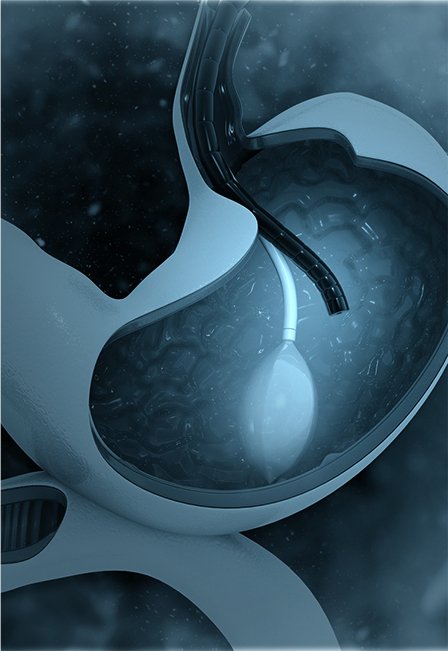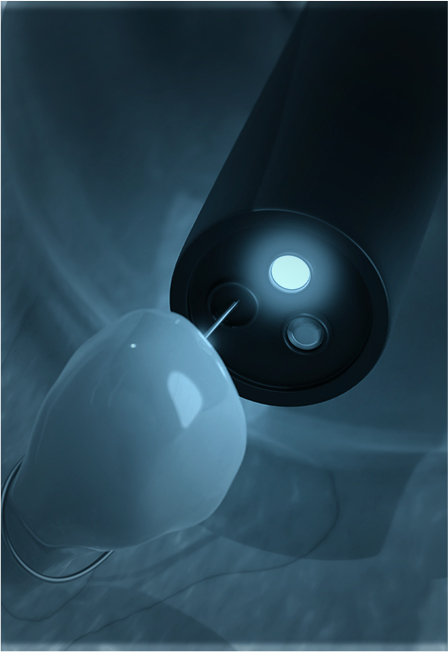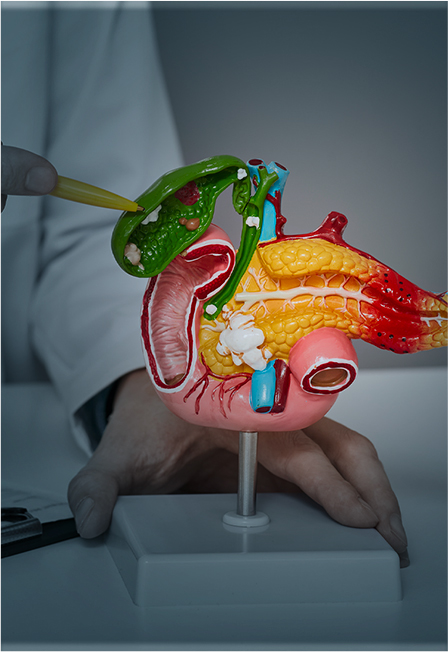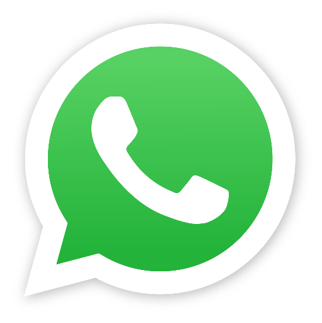
Gastroscopy, also known as Oesophago-Gastro-Duodenoscopy (OGD), is primarily used to diagnose upper digestive conditions such as stomach ulcers or cancer. To examine the lining of the oesophagus, stomach and first part of the small intestine (duodenum), a local anaesthetic throat spray and/or sedation is administered before inserting a scope through the mouth.
Gastroscopy is recommended if you have symptoms such as:
- Persistent abdominal pain, discomfort or bloating
- Difficulty with swallowing
- Nausea, Vomiting
- Heartburn
- Acid reflux
- Unexplained loss of appetite or weight
- Blood in stools
- Black stools

A colonoscopy examines the lining of the rectum and colon to detect and remove precancerous growths (polyps) as small as a few millimetres in size, making it the preferred method for early detection and prevention of colorectal cancer.
Performed under sedation, a colonoscopy causes minimal or no discomfort. During the procedure, a colonoscope (a thin and flexible tube with a light and camera attached) is inserted through the anus, and into the rectum and colon. After the procedure, you may experience mild abdominal bloating or increased flatulence for 24 to 48 hours, and less bowel movements over the subsequent few days.

Colonic stenting to relieve complete or impending large bowel blockageis used as a nonsurgical alternative for patients experiencing bowel obstruction from colorectal cancer. This is frequently performed so that emergency bowel surgery can be avoided. It functions as a bridge to the cancer surgery which is planned in subsequent weeks once bowel obstruction has resolved and patients are fitter for surgery.
A self-expanding metallic cylindrical tube (stent) is used to open up the lumen in the tumour, allowing stools to pass through. In comparison to emergency open abdominal surgery, colonic stenting followed by surgery performed minimally invasively offers lower rates of complications and mortality, coupled with less pain and smaller wounds. The chance of having a stoma is also lower.
MANAGEMENT OF BILIARY TRACT DISORDERS?

The safe and effective use of a choledochoscope aids in the exploration of the common bile duct and removal of biliary stones under direct visualisation. It also allows the surgeon to ensure that the common bile duct system is normal.
With proven safety and efficacy, laparoscopic common bile duct exploration (LCBDE) is widely recognised as the preferred method of bile duct clearance.

#08-07, 3 Mount Elizabeth, Singapore 228510
| Tel | : 6454 0054 |
| Fax | : 6764 0054 |
| : ask@surgicalassociates.sg |
#05-01, 6 Napier Road, Singapore 258499
| Tel | : 6471 0054 |
| Fax | : 6271 0054 |
| Mon to Fri | : 9am to 5pm |
| Sat | : 9am to 1pm |
| Sun & PH | : By Appointment Only |
 Let Us Help You
Let Us Help You